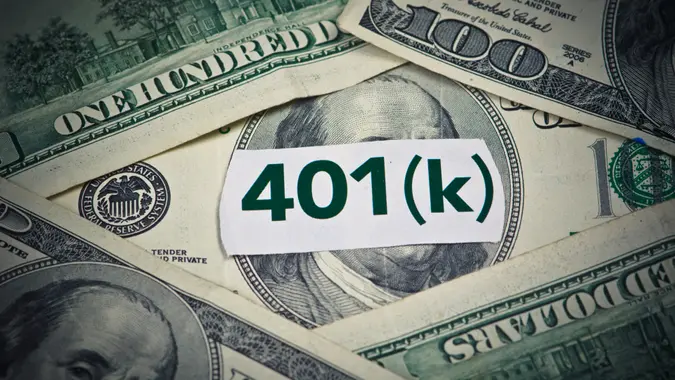Should Your Emergency Fund Look Different in Retirement? Experts Weigh In

Commitment to Our Readers
GOBankingRates' editorial team is committed to bringing you unbiased reviews and information. We use data-driven methodologies to evaluate financial products and services - our reviews and ratings are not influenced by advertisers. You can read more about our editorial guidelines and our products and services review methodology.

20 Years
Helping You Live Richer

Reviewed
by Experts

Trusted by
Millions of Readers
An emergency fund is essential at every stage of life, but once you retire, its purpose changes. Instead of protecting against lost income, your cash cushion should help preserve income, manage liquidity and reduce the risks of market volatility.
Experts explained how your emergency fund should look at this stage of life and what moves to make.
The Purpose of an Emergency Fund Shifts
While the essential goal of an emergency fund is to protect against unexpected expenses, its purpose shifts in retirement, according to Tom Buckingham, a licensed insurance agent, actuary and chief growth officer at Nassau Financial Group in Connecticut.
“During our working years, the purpose of an emergency fund is to protect against income disruptions such as a job loss or an unexpected expense like a home repair. In retirement, you’re no longer replacing income, you’re preserving it.”
Predictability Is Key
Retirees can mistakenly assume they need more cash, but what matters most is the predictability of income, Buckingham said. Younger savers are typically instructed to keep three to six months of expenses for emergencies, but “retirees may benefit from 12 to 24 months in liquid reserves, especially if their income is dependent on market withdrawals,” he explained.
Retirees with guaranteed lifetime income from annuities or pensions may need less of a buffer.
Cash Is Safe but Not Inflation-Protected
While having a lot of cash on hand may feel safe, it loses value as inflation compounds year after year, Buckingham noted.
Cash also doesn’t offer the same growth opportunities as other investments, according to Curt Scott, president and investment advisor representative at Scott Financial Group.
However, when inflation rises, interest rates on high-yield savings accounts and short-term CDs often increase as well, which can help minimize the impact of inflation on cash, Scott said.
Think in Terms of Liquidity
Nancy Anderson, regional planning director at Key Private Bank, recommended treating an emergency fund as a dedicated liquidity bucket that replaces a paycheck and helps retirees avoid selling investments during market swings.
As she put it, “Having a fully funded liquidity bucket helps the retiree receive an income stream that mimics the paycheck they received while working, without concerns of making withdrawals when there is volatility in the equity markets,” and the approach aims for peace of mind by keeping one to three years’ income set aside with capital preservation in mind.
Retirees Are More Affected by Market Volatility
An emergency fund in retirement can ease concerns about market volatility in investments that retirees rely on for living expenses, Anderson added.
Investment and retirement accounts can serve as “a lifestyle bucket used to provide lifetime income needed beyond the fixed income sources.” Monthly income can be drawn from the liquidity bucket, which is invested in shorter term, conservative, less volatile options such as a money market fund, Treasuries or an income fund.
It Should Keep Health Costs in Mind
Emergency funds can also help reduce the cost of healthcare premiums and long-term care insurance, Scott shared.
“If there is enough to cover a larger deductible for the first three to six months of long-term care expenses, the monthly premium for these policies can be significantly lower.”
But Don’t Forget About Retirement Accounts
Retirees need an emergency fund robust enough to cover near-term expenses, while the rest of their money should stay in taxable investment and retirement accounts. These accounts are designed for growth and income to keep up with inflation and provide sustainable future income.
“Funding both types of accounts for retirement income gives retirees the best of both worlds — current income with capital preservation and growth for future income,” Scott said.
More From GOBankingRates
- Nearly 1 in 3 Americans Hit by a Costly Holiday Scam, Norton Survey Shows -- How To Avoid This
- Here's What the Average Social Security Payment Will Be in Winter 2025
- How Middle-Class Earners Are Quietly Becoming Millionaires -- and How You Can, Too
- The Easiest Way to Score $250 for Things You Already Do
 Written by
Written by  Edited by
Edited by 


























